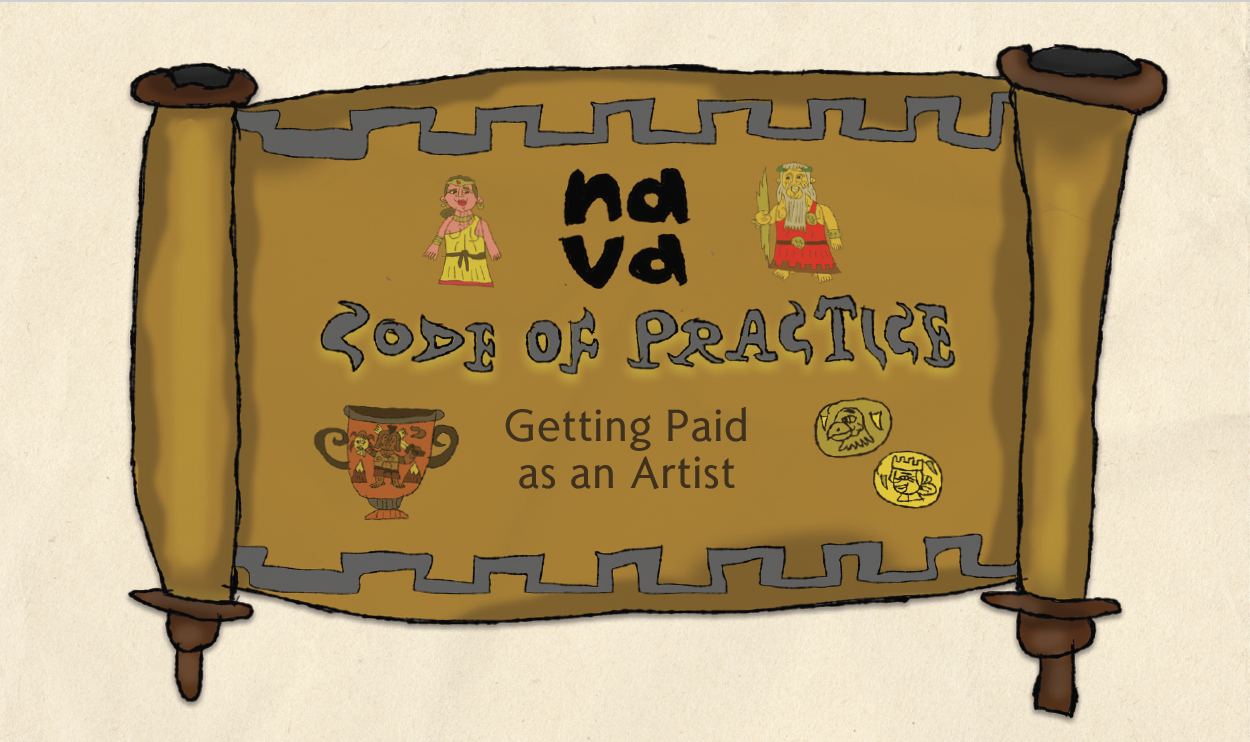Payment Standards
Guide
The Payment Standards section of the Code is designed to support the visual arts, craft and design sector to make choices about payment, employment and business practices in a way that sustains the sector as a whole.
Section Outline
Creative Career Stages
A summary of the general attributes and achievements of early, mid-career and established artists, craftspeople and designers. Artists can use this section to help determine their career stage and find minimum recommended payment standards relative to their experience and skill level in the Fees section.
Organisation Categories
A table for organisations to determine the scale of their organisation for the application of recommended Fees and Wages. Large, medium, small or micro categories are defined by varying factors including number of full-time equivalent (FTE) staff, income and expenses. These numbers may change year-to-year or project-to-project and that will influence where the organisation sits in this table at different times. Once an organisation identifies its category, it can refer to the Fees section to determine the minimum recommended standards of payment relative to its capacity.
Fees
Recommended minimum ranges for exhibition and project fees for artists, craftspeople and designers, developed via our consultative Methodology and existing recommendations from relevant professional bodies within the arts.
Wages
Recommended minimum ranges for arts worker salaries and wages benchmarked via our consultative Methodology and desktop research. These can be used as a starting point for negotiations and benchmarking.
Allowances
Additional considerations for payment and reimbursement of travel, meals and incidentals. This can be used to budget for extra expenses.
Contractors vs. Employees
Explains the differences between engaging a contractor and an employee and the responsibilities associated with different types of engagement. The information provided can help when making hiring decisions and understanding which legal obligations need to be observed.
Superannuation
A summary of the different obligations and responsibilities of employers and contractors when making superannuation contributions. The information provided can help organisations and individuals check legal obligations or apply good practices.
Taxation
Explains the different tax responsibilities and rights of organisations and individuals in the visual arts, craft and design sector. The information provides clarification around income averaging and depreciation and can be used to understand when to register for an ABN or GST and what constitutes assessable income.
Short Summaries about Payment Standards

Integrating into Business Practice
It is good practice for organisations to have an artist fee or payment policy. This policy can outline:
the organisation’s commitment to paying appropriate fees
the standards that the organisation follows (for example those outlined in the Code)
payment of superannuation
payment for travel and access costs
how pro-bono work is handled
Artists can also set and share their own fees based on service/s that they offer. It is good practice to publicly list or be transparent about these fees when working with clients and commissioners.
Migrating to new Payment Standards
Those using the fees and wages outlined in the previous Code of Practice will need to view the Payment Standards outlined in the revised Code to plan their migration to the new standards. This should not be expected to happen immediately. It may take a new financial year or new rounds of public funding for an organisation to adjust. The sector is multifaceted with a range of funding sources, business structures and strategic goals. For some, it will take small changes over time to achieve these rates, others may already be paying above them. Public policy and investment has not kept pace with the growth and diversification of the sector. We hope that the new Code is instrumental in recognising the value of artists and arts workers and improving the fundamental conditions of work and practice for a more sustainable sector.
The fee ranges are not intended to set or cap maximum fees. The minimum ranges set minimum fees that should be the lowest amount an artist or arts worker is paid. We fully support where a gallery or organisation can pay more.
For information about how the new rates were developed, see Methodology.